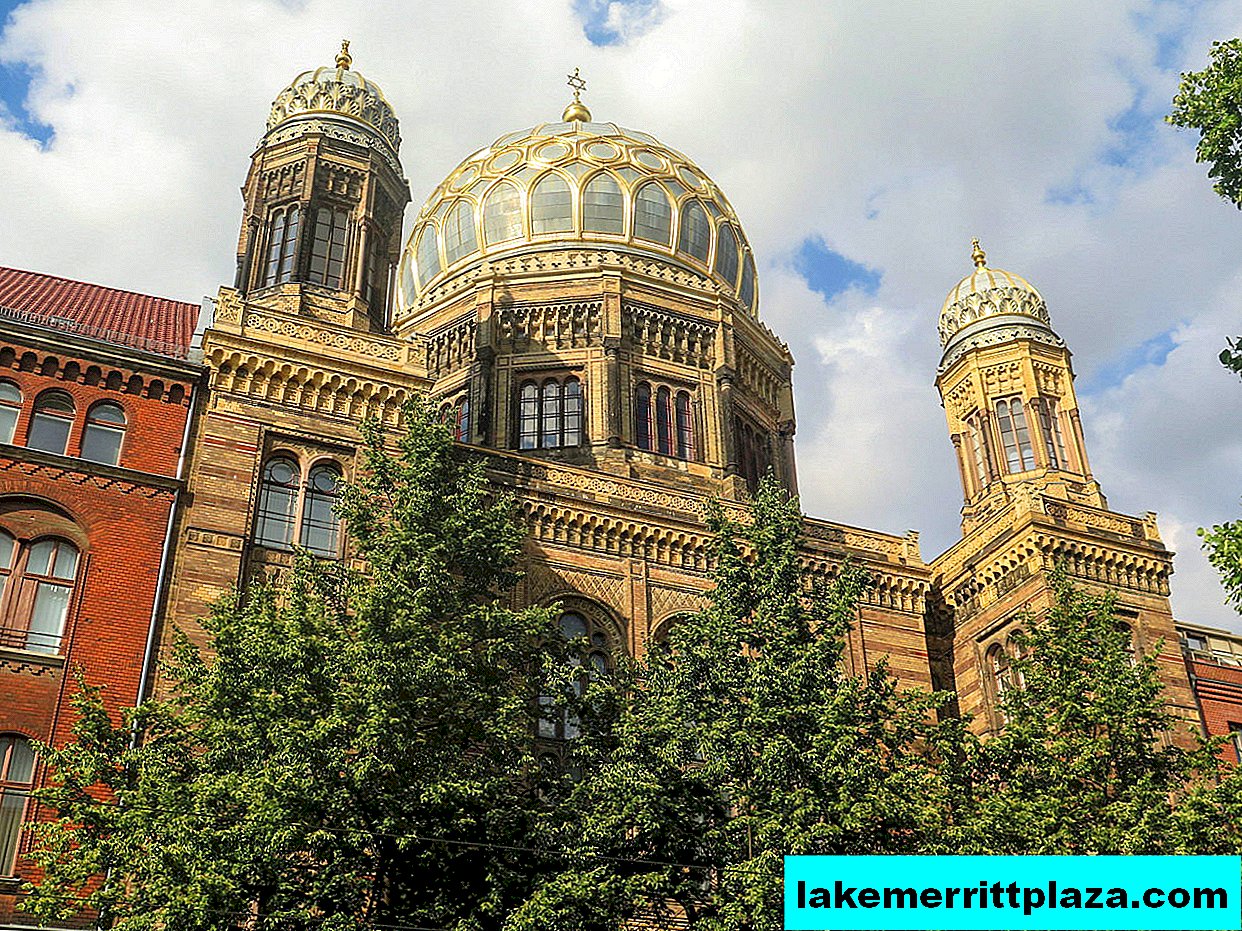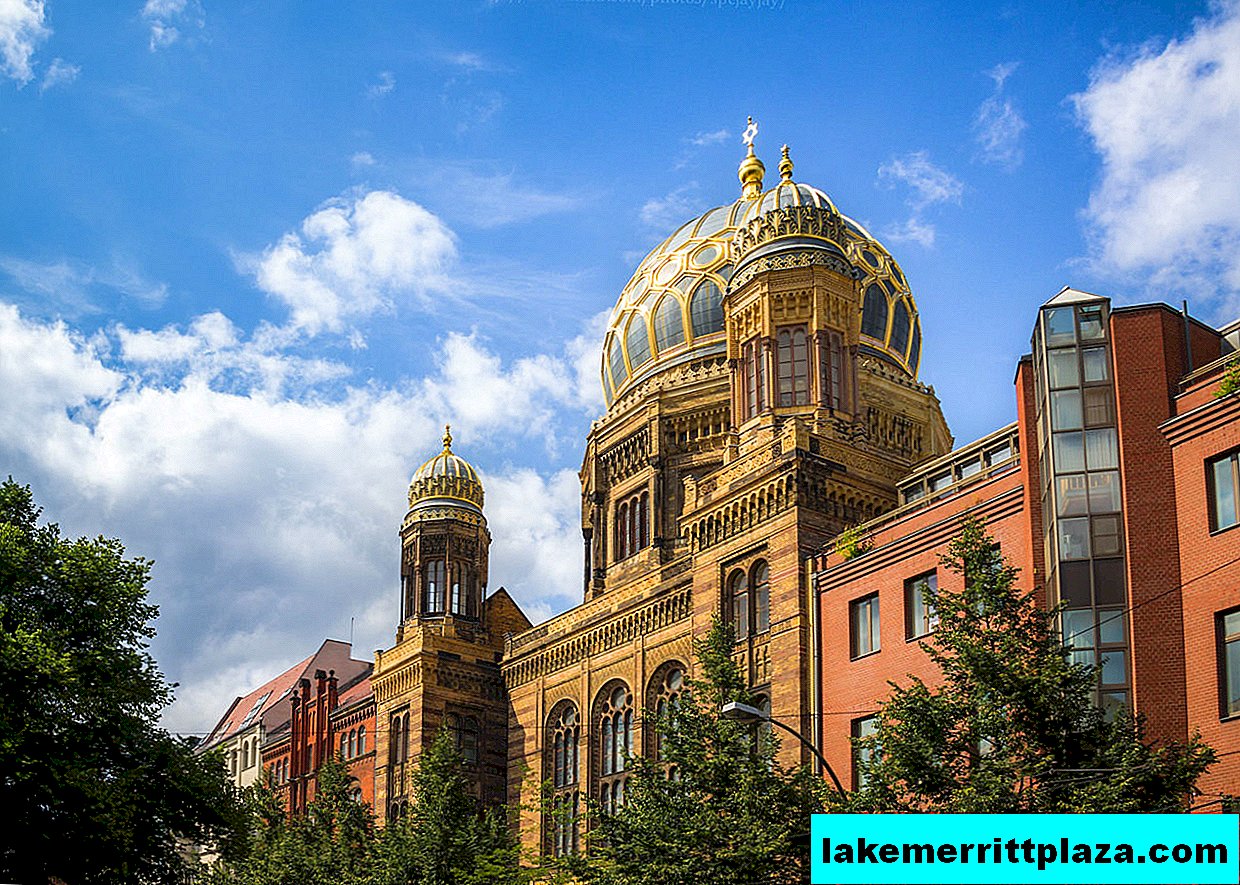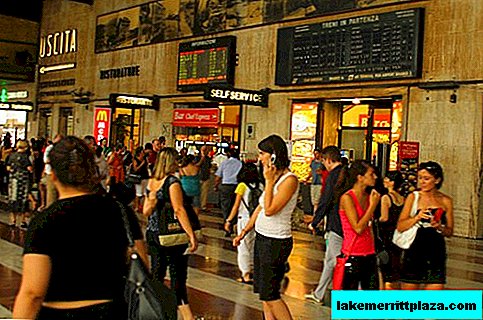The New Synagogue is a magnificent building in the Neo-Byzantine - Moorish style. It was rebuilt after the war. Today, there is a museum and cultural center of Judaism. This is a significant place not only for representatives of the Jewish people. Climbing the dome is not worth it - there is no review.

New Synagogue in Berlin (Neue Synagoge), photo by Sokleine
The new synagogue (Neue Synagoge) is located in Berlin on Oranienburger Strasse. This architectural monument, like most Berlin buildings, stood in ruins after World War II. Today we see only a reconstruction of the main Jewish shrine. Fragments of the building were recreated from drawings and historical photographs.
Synagogue Construction
The history of the New Synagogue began in the mid-19th century. Then the Jewish community of Berlin grew actively, immigrants from the East came. What was needed was a meeting house that accommodated believers even on major Jewish holidays. The construction was entrusted to the Berlin architect Eduard Knoblauch, who won the competition in 1857. He created a project in oriental style, inspired by the architecture of the Granada Alhambra.
The first foundation stone was laid in May 1859. Construction lasted seven years; after the death of Knoblauch, the project was completed by Friedrich August Stüler. The National Newspaper, reporting the opening of the synagogue, called it the "pride of the Jewish community of Berlin," "the decoration of the city."
Architecture

Dome, photo by Ralf Kornetzki

The window shows the hall, photo by Dieter Müller
The main prayer hall was designed for a simultaneous stay of 3,000 parishioners. Dimmed light penetrated through the colored glass. Due to the characteristics of the built-up area, the building had a curved structure. The facade, according to the Moorish tradition, was laid out with colored bricks, decorated with glazed ceramics. Three domes - a large one in the center and two small ones above the towers - were built in the form of arched oriental tents, decorated with gilding.
Tragic years
On November 9, 1938, on the tragic Kristallnacht, the Nazis ravaged the synagogue. Vandals entered the building, desecrated Torah scrolls, smashed decoration, set fire to furniture. The police and fire department of Berlin saved the architectural masterpiece from total destruction. The restored temple was used for sermons and concerts until March 31, 1940. Then the building was confiscated from the Jewish community, occupied by military depots and state offices. In 1943, it was destroyed by British aircraft.
After the war, the Jewish community of Berlin was revived. It was impossible to repair the destroyed synagogue, they wanted to demolish it, because only a part of the facade with the pediment remained. The decision to reconstruct the architectural monument was made in 1988. It was rebuilt, recreating the main facade and domes, but the interior space has become much smaller.
New Synagogue - an outstanding architectural monument
After the reconstruction, the New Synagogue was opened in May 1995. Most of the building is now occupied by the memorial museum and the center of Jewish culture - Centrum Judaicum. A prayer room was arranged for the parishioners, but the main hall was not restored. The ruined part is the outline of a former luxurious synagogue with fragments of masonry around the perimeter.

Moorish-style synagogue, photo SPC # JAYJAY
Despite the fact that the synagogue is open to all comers, entrance to it is paid. For current information on opening hours and prices, see the website.
How to get there
Take the city train lines S1, S2, S25 or the tram M1, M5 to the stop
Oranienburger Straße;
take metro line U6 to U Oranienburger Tor station.
How do I save on hotels?
Everything is very simple - look not only at the booking. I prefer the search engine RoomGuru. He is looking for discounts at the same time on Booking and on 70 other booking sites.








